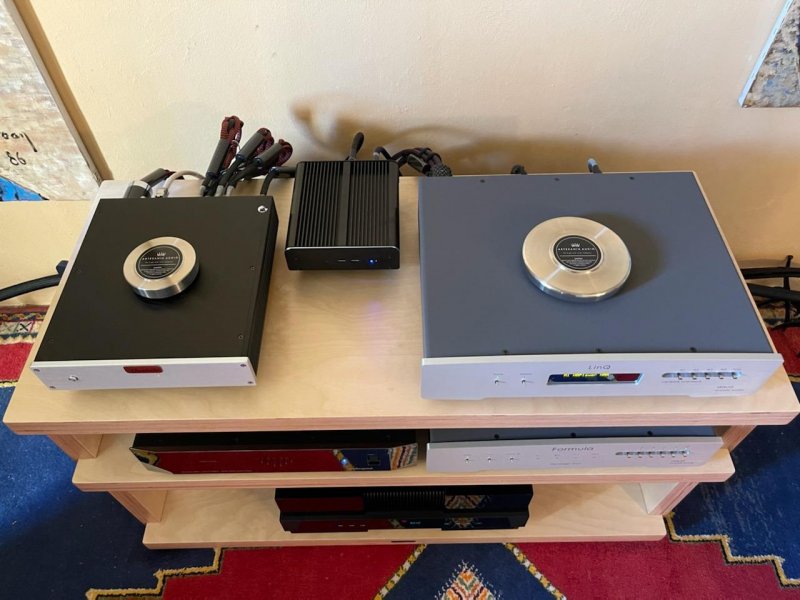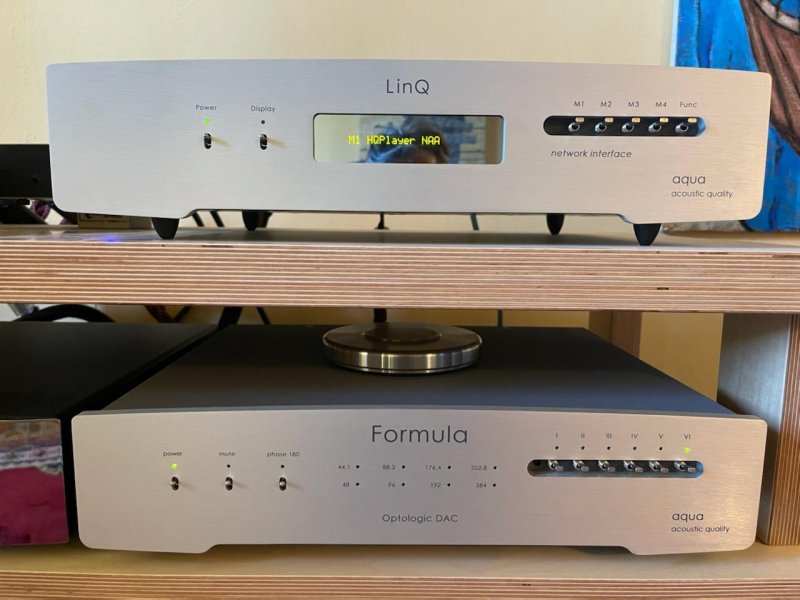Center Stage2M
Designed by Joe Lavrencik, Critical Mass Systems
Introduction
We are very pleased to announce a major revision and replacement to our Center Stage2 audio feet. Each Center Stage2 model has been improved and replaced by Center Stage2M.
There were several objectives behind the development of Center Stage2M. Firstly, we wanted to build upon the proven approach developed for the LS (loudspeaker) series of Center Stage2 products.
Secondly, each new Center Stage2M product had to be a clear audible improvement over its current facing Center Stage2 relative. In other words, compared to the current CS20.8, CS2 1.0 and CS2 1.5, each new Center Stage2M had to be greatly improved across the audible spectrum.
Finally, and most important, we wanted the performance improvement of each new Center Stage2M product to be so great, it leapfrogged its bigger brother in the current CS2 line up. In better words, the Center Stage2M 0.8 had to be better than the CS2 1.0. The Center Stage2M 1.0 had to be better than the CS2 1.5 and the Center Stage2M 1.5 had to set a new standard for audio footer performance in the industry.
Center Stage2M accomplishes every objective we set by a wide margin. We are thrilled with Center Stage2M and we hope you will give them a try throughout your system. The “M” stands for “MAXX”.
What was the Innovative Approach?
Center Stage2M is direct trickle-down technology garnered from advancements made in the development of the Center Stage2 LS series of loudspeaker feet. The LS series of Center Stage2 products reduce stored loudspeaker cabinet resonances and entropy to a vanishing level resulting in enhanced clarity and musicality across the audible spectrum.
Rather than approaching the problem of reducing vibration using new untested methodologies, we decided to “use the advancements we knew worked well with loudspeakers”. We used tested design fundamentals resting within the discipline of material science to determine the correct sequencing of the Center Stage2M materials. We established the proper proportions of the materials. And, we added damping in the very last stage in an amount that would eliminate the internal noise of the product and the component without rolling off the top end of the acoustic envelope.
How Does Center Stage2M Work?
Gain, Relative Permittivity, and the efficiency of electrical devices can be expressed as dimensionless numbers. For a moment, think of electricity as dimensionless energy moving through 3 dimensional pathways; printed circuit boards, resistors, capacitors, inductors, power supplies, wire, transformers, etc. When vibration is introduced into the atmosphere at the front baffle of the loudspeakers, vibration becomes a 3-dimensional form of energy that can only dissipate by permeating into 3-dimensional objects causing an unnaturally high state of mechanical excitation to occur within them; the objects vibrate. They will continue to vibrate when music is playing and eventually establish a relatively constant state of unnaturally high equilibrium that is well known to degrade the performance of audio components.
Center Stage2M helps components reach their engineered potential in 3 ways. First, they mitigate vibration coming up from the surface below them. Second, they cancel out their own noise. This very difficult accomplishment ensures truth to source material and truth to component engineering design. Third, they transfer entropy out of the component. This feature requires time and is the reason for the extended settling process.
It might be more appropriate to view Center Stage2M as the counterbalance to a destructive energy cycle within your components that will greatly reduce unwanted damaging energy and permanently hold a more peaceful state of equilibrium. The pleasant surprise is the wonderful sonic envelope that results.
Audio Becomes Visual - The Total Immersion Effect
The Total Immersion Effect can be described as a highly articulated acoustic sound field that extends from the back of the soundstage and sometimes wraps around the listener. It is crossing the threshold where audio becomes visual and the listener becomes part of the recording.
Center Stage2M suspends disbelief. You experience something on the order of a 4k hi-rez 3D surround-event. You see the image in space, you hear and see the musical event occur inside the image, and then you hear, see and feel the sensory event spread out around you from the soundstage. Audio becomes visual and you become immersed in the sound field.
Knocking down the “wall” that separates the listener from the musicians requires the electromechanical balance inside the components to reach an ultrafine point of equilibrium and to hold that equilibrium point across 20,000+ Hz in a fluctuating energy field so that the component can remain stable enough to create the Immersion Effect with consistency in the listening space.
What to expect during settle in
The settling in period is generally 7 to 10 days, but it can be longer. Because Center Stage2M will dramatically change the current electromechanical equilibrium of your components, you should expect your system to temporarily degrade at the outset. This is perfectly normal. Your soundstage will then begin to reconstruct itself by gently tipping upward and downward as it establishes a new and better equilibrium point.
In the end stage, the oscillations will become ultrafine and be largely experienced in the high frequencies. They will be barely perceptible unless you really focus. It is extremely important to let the system play for at least 14 days before assuming it has reached equilibrium. Playing a system 24/7 is not always necessary, but the more playing time the better. Think of it like running in a brand-new component. Run in time is normal.
Your end of the Bargain, or Making the Experience Better
Center Stage2 is good for beginners and advanced listeners, so long as you exercise extreme patience during the settling period. Sonic fluctuations you may experience during the settling period will subside as time passes. Here’s what you need:
- Components crafted by a known and reliable manufacturer. Your components do not need to be among the “most expensive” or the purported “best” in the world. You will experience excellent results with low cost components. A host of components were used to design Center Stage2M, some of them very low cost. This was done to assure consistency of performance. It is certainly true, however, that the better your components, the better your results.
- Neutral wiring crafted by a known and reliable manufacturer. Some wiring is a “tone control”. Tone control wiring is not necessary. The more invisible your wire, the less it makes its presence known in your system, the better your results.
- A Clean Circuit. It is critically important to make sure that “cheap” power supplies from computers, screens, servers and most turntables etc. are plugged into a circuit separate from the circuit servicing your main components. The dirt from these low-end plug-ins will contaminate your signal. You may not have heard it before, but you will certainly hear it with Center Stage2M.
- Stable rack(s) and/or stand(s). Home furnishings are fine. Center Stage2M was vetted on various flat wooden surfaces with Janka ratings of 1200 and higher equating to an elastic modulus of 4 GPa or greater. This means that virtually any flat surface will net tremendous results. Having said this, the better the surface with respect to its associated and/or inherent technological properties, the better the results. The results on CMS racks is superlative.
- Proper loudspeaker set up. This is essential. Center Stage2M was designed to be most effective in 2-channel stereo system listening rooms with conventional loudspeakers of appropriate size and design for the room, and with seating positions reasonable and appropriate for the loudspeaker and room dimensions.
- When you put Center Stage in, pull every tweak out. Center Stage2M will take about 7 to 10 days to settle. Be slow, careful and cautious about adding any other device



